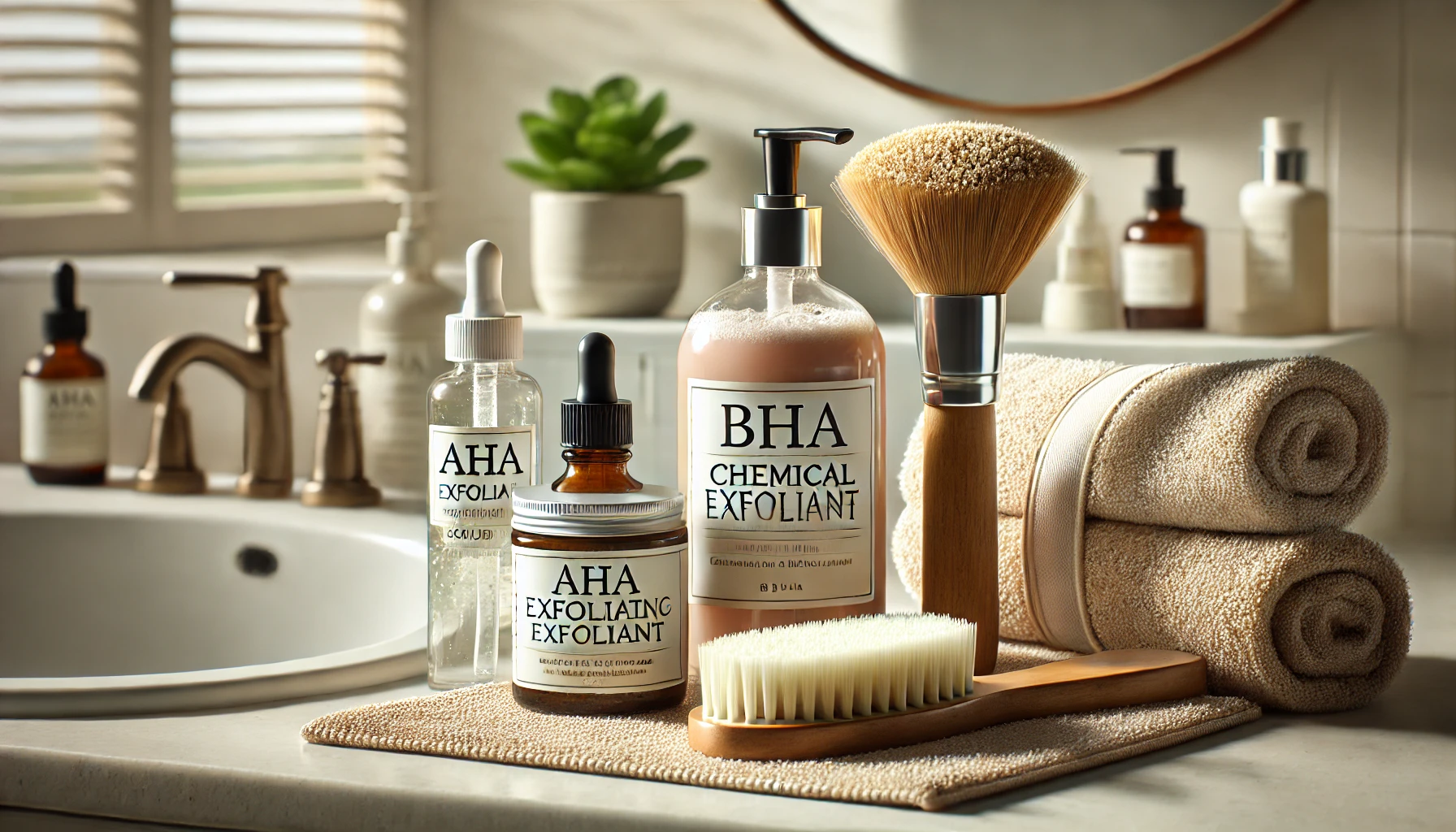Exfoliation is a vital part of any skincare routine, helping to remove dead skin cells, unclog pores, and promote a brighter, smoother complexion. However, when done incorrectly, it can lead to irritation or damage. Here’s a guide to exfoliating effectively and safely for radiant skin.
Why Is Exfoliation Important?
Your skin naturally sheds dead cells, but sometimes they accumulate on the surface, causing dullness, rough texture, and clogged pores. Exfoliation helps by:
- Enhancing skin texture and tone.
- Preventing breakouts by unclogging pores.
- Boosting the absorption of other skincare products.
- Promoting cell turnover for fresher, healthier skin.
Types of Exfoliation
1. Physical Exfoliation
Involves using scrubs or tools to manually remove dead skin cells.
- Examples: Face scrubs, exfoliating brushes, and sponges.
- Best for: Normal to oily skin types.
2. Chemical Exfoliation
Uses acids or enzymes to dissolve dead skin cells.
- Examples: AHAs (glycolic acid, lactic acid), BHAs (salicylic acid), and enzymes.
- Best for: All skin types, especially sensitive or acne-prone skin.
How to Choose the Right Exfoliant
For Dry Skin
- Opt for AHAs like lactic acid to hydrate while exfoliating.
- Avoid harsh scrubs that can exacerbate dryness.
For Oily or Acne-Prone Skin
- BHAs like salicylic acid penetrate deep into pores to control oil and prevent acne.
- Clay-based exfoliants can also help absorb excess sebum.
For Sensitive Skin
- Use gentle enzyme-based exfoliants or low-concentration AHAs.
- Avoid physical scrubs, as they can cause irritation.
For Combination Skin
- Combine chemical exfoliants with occasional gentle physical exfoliation on oily areas.
How Often Should You Exfoliate?
- Normal/Oily Skin: 2-3 times per week.
- Dry/Sensitive Skin: Once a week or as needed.
Over-exfoliation can damage your skin barrier, so start slow and adjust based on how your skin responds.
Steps to Exfoliate Properly
Step 1: Cleanse Your Skin
Start with a gentle cleanser to remove dirt and oil, preparing your skin for exfoliation.
Step 2: Apply the Exfoliant
- For physical exfoliants, use gentle circular motions and avoid scrubbing too hard.
- For chemical exfoliants, apply with a cotton pad or your fingers and let it absorb.
Step 3: Rinse (If Necessary)
Some chemical exfoliants are leave-on products, while others need to be rinsed off. Always follow the product instructions.
Step 4: Moisturize
After exfoliating, apply a hydrating moisturizer to soothe and nourish your skin.
Common Exfoliation Mistakes
1. Over-Exfoliating
Exfoliating too often can weaken your skin barrier, leading to redness, sensitivity, and dryness.
2. Using Harsh Scrubs
Scrubs with large, abrasive particles can cause micro-tears in your skin. Choose gentle, finely-milled options if you prefer physical exfoliation.
3. Skipping Sunscreen
Exfoliation increases your skin’s sensitivity to the sun. Always apply sunscreen afterward to protect your skin.
Signs of Over-Exfoliation
If you notice the following signs, reduce the frequency or switch to a gentler exfoliant:
- Redness or irritation.
- Excessive dryness or peeling.
- Increased sensitivity.
Final Thoughts
Exfoliation is a powerful tool for achieving smooth, glowing skin, but it must be done with care. By choosing the right exfoliant for your skin type and following best practices, you can enjoy the benefits without any drawbacks. Remember, less is often more when it comes to exfoliation—treat your skin gently for the best results!


